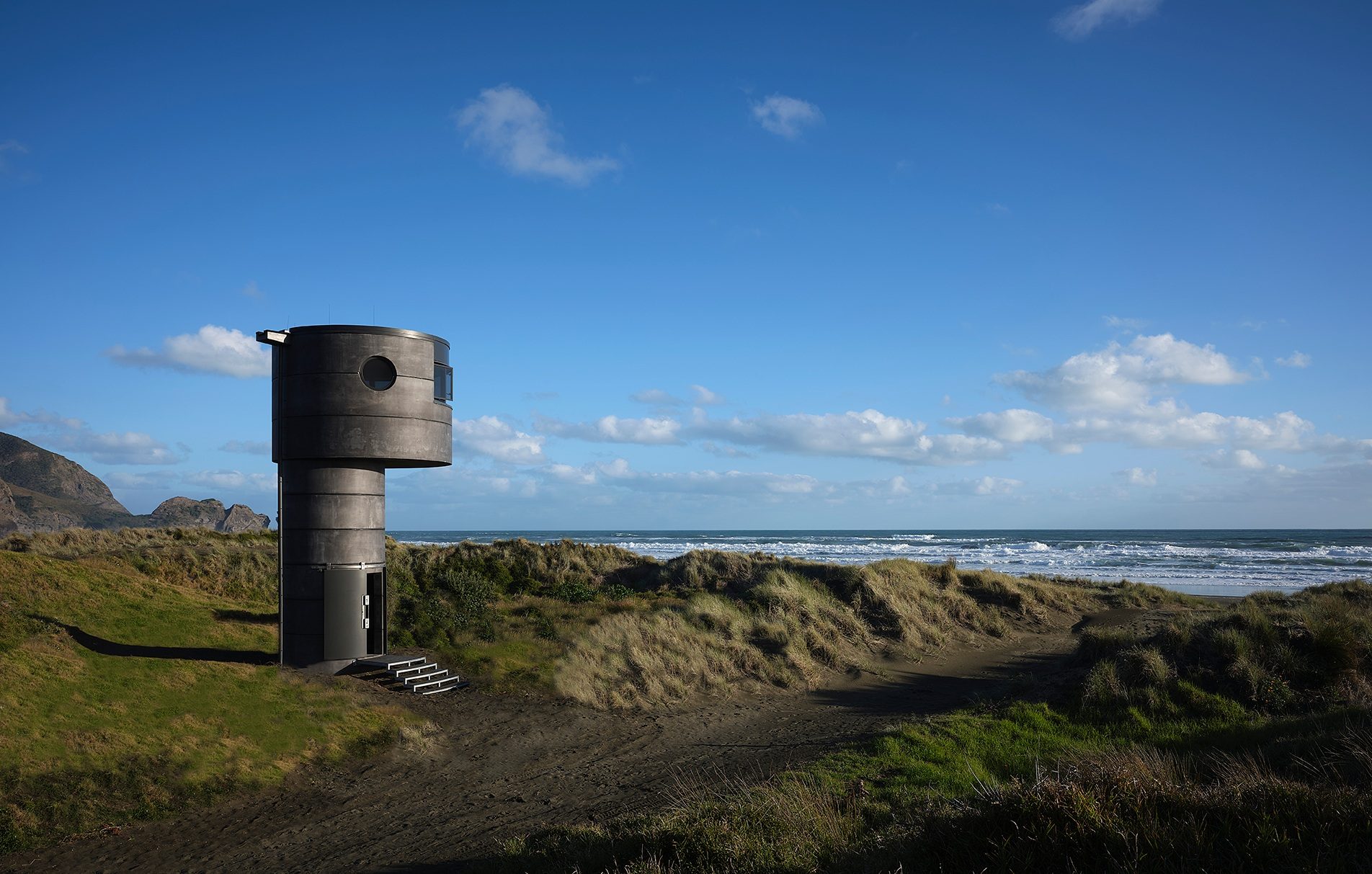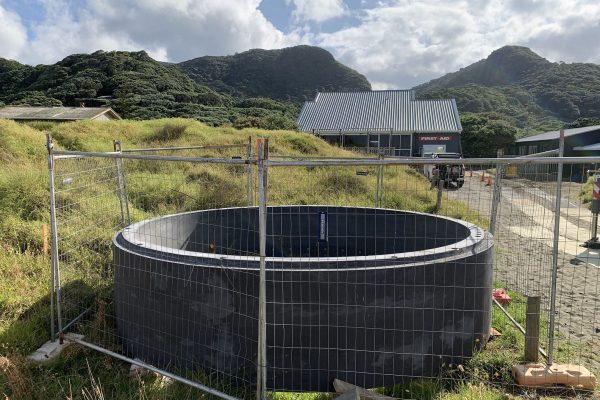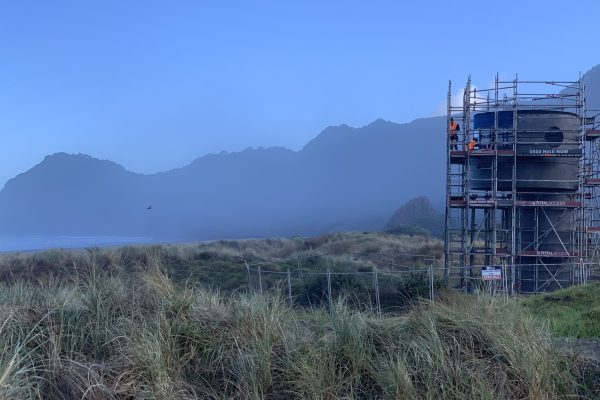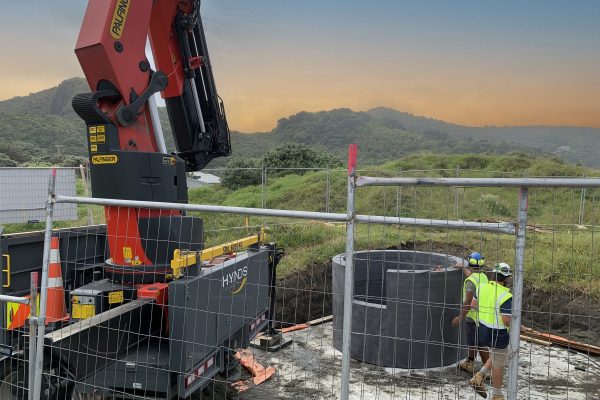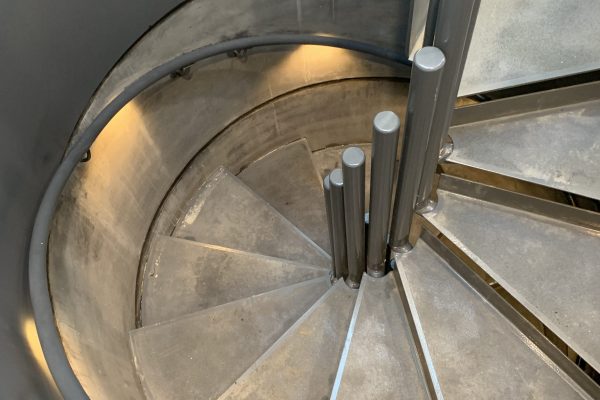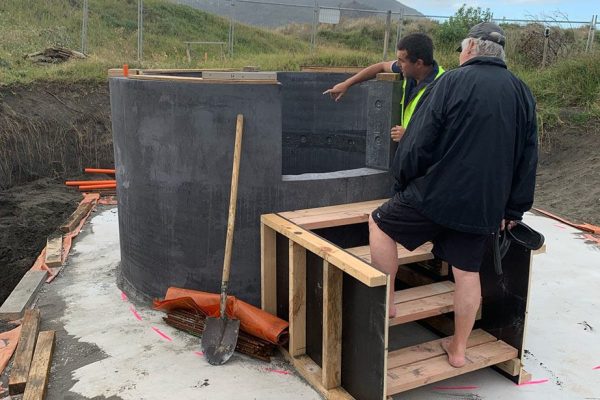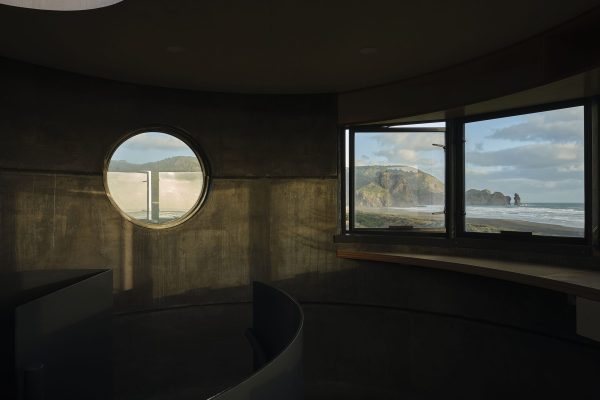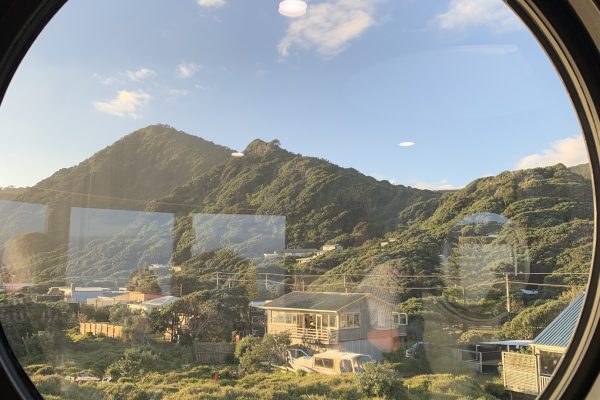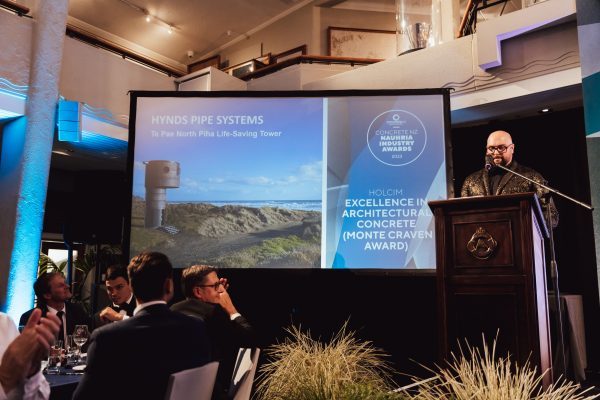The lifeguard tower is an essential facility that enables observation, patrolling and protection at North Piha — one of New Zealand’s most beautiful but dangerous surf beaches. The tower serves the club and the community providing a functional and durable building to replace the existing dated structure.
The architect’s brief was for a robust, low-maintenance building that would withstand the severe North Piha coastal environment. It needed to provide accommodation for four lifeguards with excellent visibility along the beach — a building that was functional and responded to its context.
The form offers a softness and quiet presence in this powerful coastal location. The site is remote, so precast concrete elements were chosen early in the concept design for factory manufacture and assembly on-site. In-situ concreting was kept to a minimum to minimise dune and planting disturbance on this fragile beach.
North Piha is a black sand beach on Auckland’s West Coast. The black oxide concrete references this and the curved form reflects the undulating dunes that the building sits amongst. The tower is modest in scale and recessive, respecting its setting. At the same time, as a beacon for visitors to the beach, it requires easy recognition, and the distinctive form sits in contrast to the beautiful, rugged backdrop. This is a piece of coastal sculpture with a nod to traditional maritime observation structures around the New Zealand coast.
The tower is made up of 10 individually bespoke precast concrete elements comprising 6 No 2100 mm internal diameter shaft elements, 3 No 4000 mm internal diameter podium elements and a precast scupper. The tower shaft elements sit on a large in-situ concrete foundation and support the podium elements that cantilever towards the sea. Access to the podium level is via a spiral steel staircase with the treads bolted to the shaft elements
The fabrication of the precast elements used existing pipe and manhole riser moulds customised to each bespoke element. The 210 mm wall thickness of the shaft elements provided challenges to the structural engineer and precast manufacturer particularly in designing and detailing the 18 No drossbach ducts to carry the tie-rods required to support the cantilevered cast in-situ floor podium and precast elements.
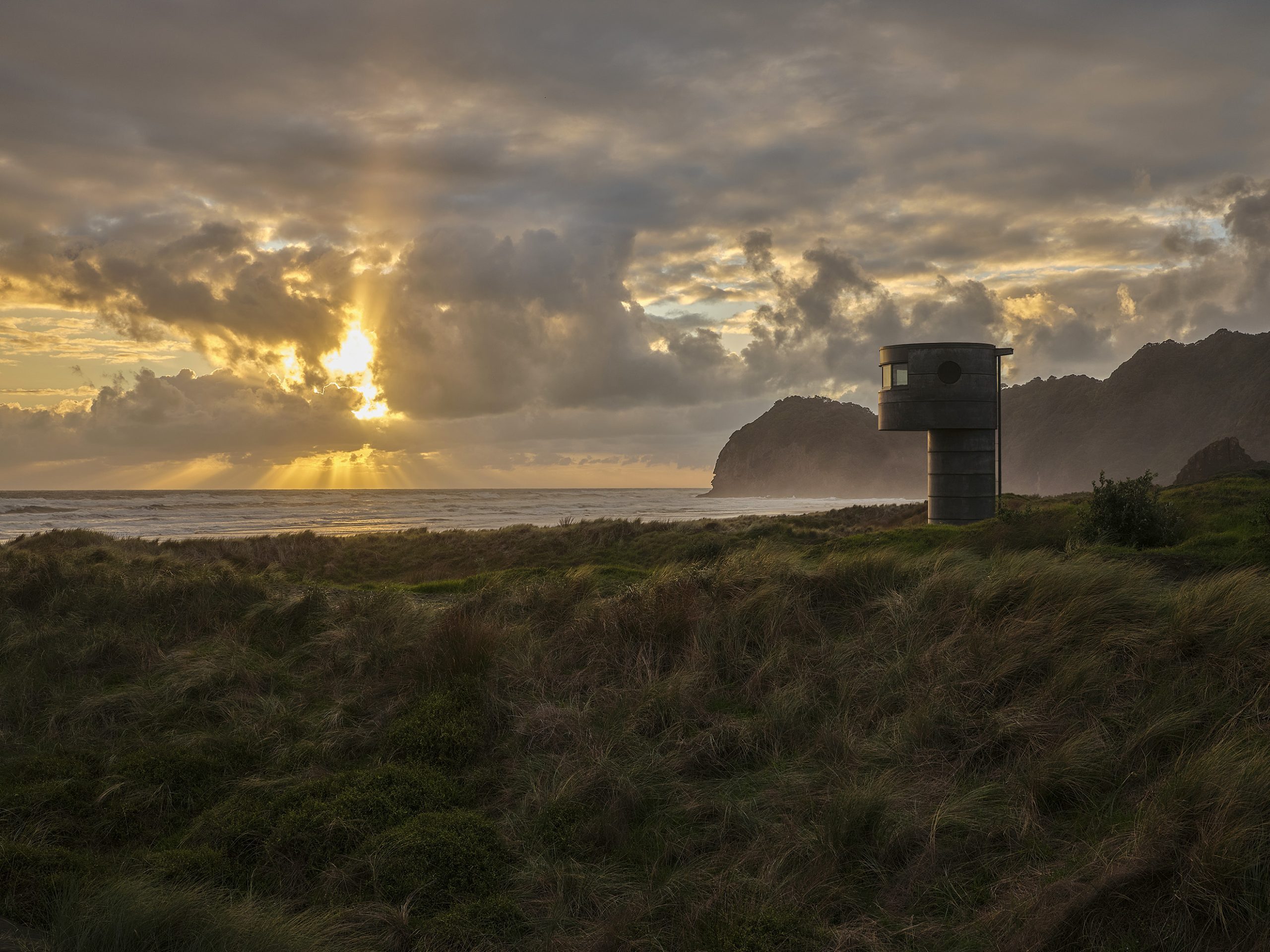
Challenges faced by the precast team included:
- Numerous shop drawing changes to resolve design, detailing and manufacturing issues arising as the concept evolved into the finished product
- Numerous black oxide test panels were cast to find the closest match to the Piha black sand
- Bespoke mould customisation for each individual element to provide the required openings for the doorway at ground level and the windows at the podium level
- Significant Quality Control checking required for shape geometry of cut-outs, drossbach duct positioning, custom reinforcing, placement of lifting anchors, and location of inserts to support the spiral steel staircase treads
- Design and bracing of the precast elements for safe transportation to site and subsequent erection
- Delivery to site of the 4500 mm external diameter concrete elements along a narrow, windy Auckland West Coast Road.
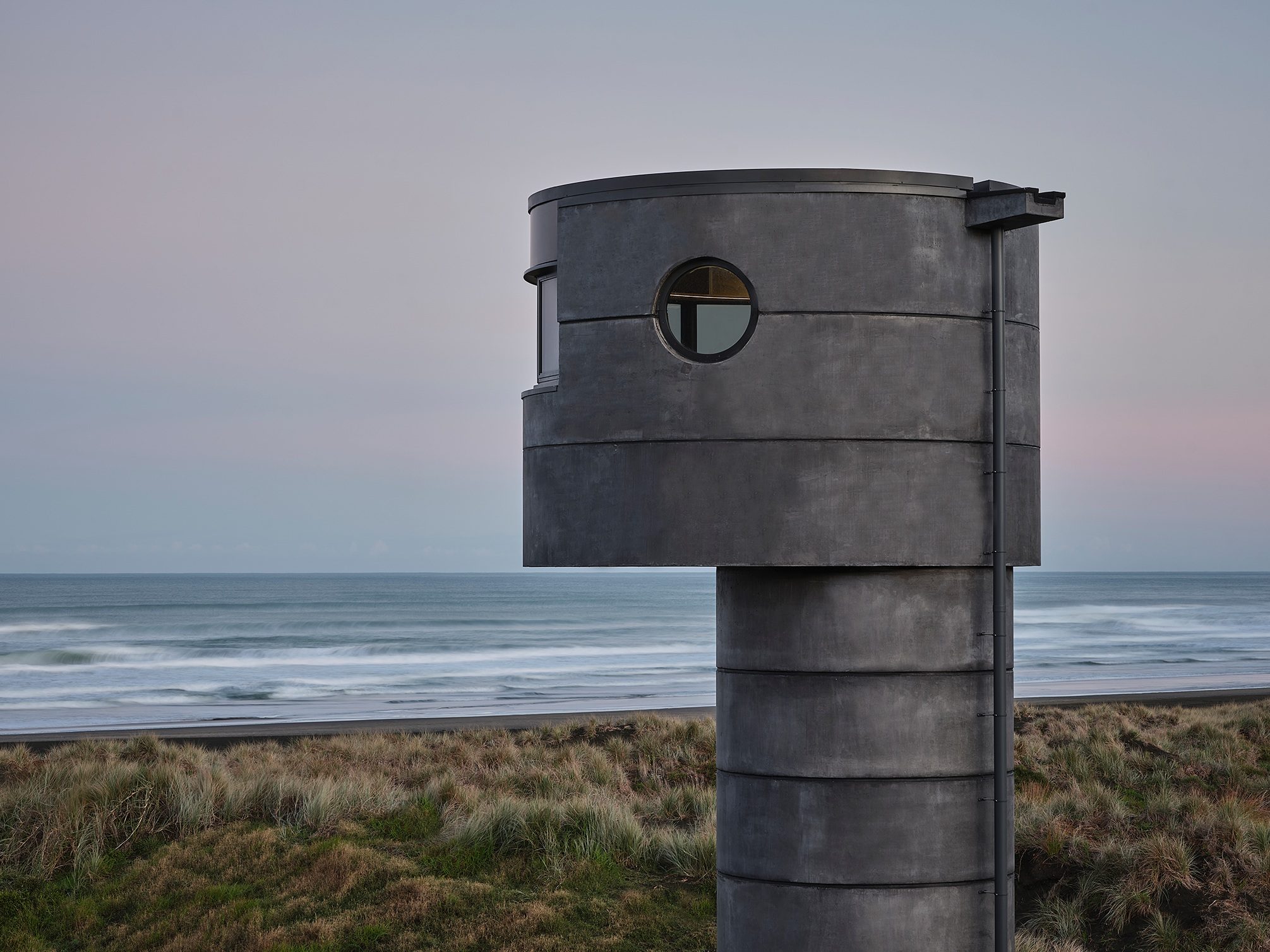
The tower is sustainable, utilising operable windows for ventilation, with high levels of insulation, sun protection, thermal mass, and natural light. It provides shelter and protection for the lifeguards. The placement of the windows was carefully determined with the club to provide optimum beach surveillance and a connection back to the clubhouse.
Piha is a part of the rohe (territory) of Te Kawerau ā Maki (the indigenous Māori tribe) who gifted the name Te Pae, meaning ‘to perch’ — a place to sit, look, and observe. The architect successfully incorporated this narrative into the concept of the tower.
This new tower is a vital addition to safety at North Piha. It delivers a facility that supports the extraordinary volunteers who run it and meets the needs of its community now and into the future.
Hynds Pipe Systems is proud to have participated in the delivery of a unique structure to this community which included funding from the Hynds Foundation.
Te Pae North Piha Surf Life-saving Tower has been recognised and is a Finalist in the 2022 World Architecture Festival in Lisbon later this year.
Photographs by Sam Hartnett

